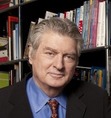SMPL Q&A: 3 questions on differentiation and usefulness with brand strategist Britt Bulla
SMPL Q&A is a blog feature in which we interview experts on all things relevant to branding, design and simplicity. In this Q&A, we speak with Britt Bulla, senior director of strategy, about how utility stands to be a brand’s greatest differentiator.
Brands have long focused on differentiation within their category – does brand differentiation still matter?
Not in the way we’ve traditionally thought of it, and perhaps a bit less than it used to.
That’s because brands today aren’t just competing with one another for differentiation within a category, they’re competing against brands across categories for share of customer time. This fundamentally changes how brands need to think about themselves—it’s not just about the messages they send, it’s about the role they play in customers’ lives.
Another way to think about brand differentiation strategy is that brands don’t have audiences or targets they need to message to in a traditional sense. Rather, they have users—people or groups who will choose whether to make the brand a part of life, every day.
This means that brands need to approach brand differentiation through the lens of how to be fundamentally useful to a customer day-to-day.
What do you mean by “useful?”
By useful I mean providing experiences that are well-designed for a purpose—to achieve a very clear, helpful outcome. Further, these experiences have to be intuitive and friction-free free for the user.
For example, CVS Health is doing this particularly well today with its customer-centric branding strategy, transitioning themselves from a retailer to a healthcare brand, and creating in-store experiences and services that enable it to become a one-stop-shop for customer health. They’re a destination in which a customer can walk in, get diagnosed via Minute Clinic, fulfill a prescription at the pharmacy, and pick up basic goods on the way out.
But as more companies emerge with “usefulness” as their foundation—building a business focused on a specific consumer pain point or issue—the concept of “usefulness” will become table-stakes pretty quickly.
So if “usefulness” is increasingly expected rather than pure brand differentiation, what follows that? What do brands need to strive for?
Indispensability—becoming a brand the customer or user truly believes he or she cannot live without. There are three characteristics of indispensable brands:
Dynamism: Brands need to understand that what is useful to a customer today will change. They need to have a customer-centric strategy with the inherent flexibility to adapt to customer needs, and evolve with their audience.
Customer obsession: Brands must be absolutely obsessed with their customers and their needs. This isn’t just understanding why customers choose them on practical and emotional levels—it’s having a clear view how the brand can make a fundamental, positive, sustained difference in the life of the customer.
Technology enabled (but not centric): Too many companies today see technology as an end in itself—e.g., “we need to build a new mobile app” or “we need to integrate virtual reality into our retail experience.” This is the wrong mindset. Brands need change their thinking and realize that emerging technologies are not the solution to customer challenges—they’re a vessel for delivering a unique solution.
Britt Bulla is senior director of strategy at Siegel+Gale. Follow Britt on Twitter: @brittbulla
The post SMPL Q&A: 3 questions on differentiation and usefulness with brand strategist Britt Bulla appeared first on Siegel+Gale: Brand Consulting, Experience, Strategy, and Design.
Alan M. Siegel's Blog
- Alan M. Siegel's profile
- 4 followers



